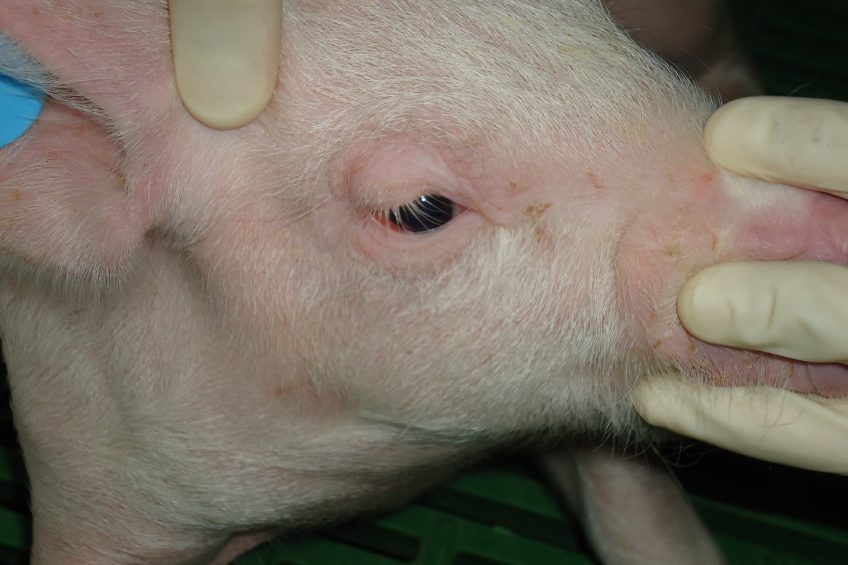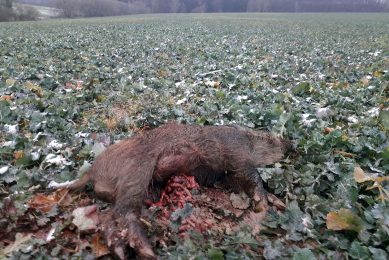New tool to prevent oedema disease

With the arrival of a new vaccine on the European market, there is another tool for the prevention of pathogens on pig farms. With future scenarios restricting the use of antibiotics and prohibiting zinc oxide, this will be a perfect ally in the fight against oedema disease.
The growing emergence of antibiotic resistance has been and is still one of the greatest concerns for health authorities worldwide. Global entities like the Food and Agriculture Organisation of the United Nations (FAO) have organised initiatives such as ‘The FAO action plan on antimicrobial resistance 2016-2020’. Under this initiative, the agency has committed itself to working in countries whose legislation, regulatory surveillance and monitoring systems on the use of antimicrobials, and the prevention and control of antimicrobial resistance, are weak or inadequate. It is in these countries where the risk of emergence and spread of antibiotic-resistant micro-organisms is greater. In an increasingly globalised world, it goes from being considered an intrinsic risk to a country or location, to a global threat.
In the same vein, the World Health Organisation (WHO) has established the acronym GLASS, which stands for ‘Global Antimicrobial Resistance Surveillance System’. This surveillance system aims to identify pathogens that pose the greatest threats to health globally in order to inform decision-making, drive local, national and regional action, and provide the evidence base for action and advocacy. In Europe, the European Medicine Agency (EMA) is currently working on a project called the European Surveillance of Veterinary Antimicrobial Consumption (ESVAC), which primarily aims to collect information on how antimicrobial medicines are used in animals across the European Union (EU). Starting in 2010, this project continues today with a new roadmap covering the next 4 years.
Extra pressure on the pig industry
All of these government initiatives add to a growing demand from consumers for organic and pesticide-free products. If all of this pressure is transferred to the pig industry, then, in the case of Europe, the prohibition of zinc oxide as a therapeutic agent in the diet of piglets must also be included. This new scenario leads us to a simple question: are we prepared for the future?
Hipra is working to meet both present and future health needs; therefore, the development of vaccines is their core business. One of the future needs concerns the proliferation of well-known and prevalent bacteria such as Escherichia coli. A preventive tool against oedema, an enterotoxaemia produced by a Verotoxin 2e, named Vepured, is a new vaccine developed by Hipra’s R&D department. It has been designed to control present and future threats due to Verotoxigenic E. coli. The vaccine, which obtained recent marketing authorisation from the European Medicine Agency (EMA), comprises a recombinant VT2e antigen. During its manufacturing process, and, after the culture of E. coli producing VT2e, the antigen is submitted to a purification process by means of chromatography. The purpose of this process is to select and separate VT2e from any other type of endotoxin produced by E. coli, which allows for obtaining an antigen concentration above 90% in the vaccine.
Figure 1 – Immune response in pigs from vaccination until end of fattening period.

Long-life immune protection
To complement the antigen, the vaccine has a double adjuvant based on aluminium hydroxide and DEAE. Aluminium hydroxide, an adjuvant widely used in both human and veterinary medicine, ensures a slow release of the antigen and thus a longer immune response over time, specifically stimulating Th2 lymphocyte-mediated immunity. DEAE is a polycation that favours the development of a strong and rapid immune response against the antigen to which it is adjuvanted. This interesting combination, purified antigen and double adjuvant, ensures that the vaccine can be safely administered to piglets as early as two days old. The protection conferred by the vaccine starts at 23 days of life and lasts until the end of the fattening phase, thanks to a potent and long-lasting immune response (Figure 1). When the vaccine is used on commercial farms, the efficacy of the vaccine is reinforced by reducing clinical signs and preventing mortality (Table 1).
A study was conducted on farms with a history of oedema disease and positive diagnoses for VT2e. For this, 764 piglets were used for the group of vaccinated animals and 643 piglets were used in the control group. The animals were followed up from the day of birth until they were sent to the slaughterhouse. Thanks to this follow-up, a statistically significant improvement was observed in the weight of the vaccinated animals compared to that of the non-vaccinated animals at the time of slaughter (vaccinated: 109.64±14.35, control: 105.54±14.81). With regard to daily weight gain (DWG), the improvement was also statistically significant, with the vaccinated group presenting the best results (vaccinated: 598.63±82.99, control: 575.13±85.11).
Oedema disease in the fattening phase
During the process of selecting the farms to be studied, one farm was found whose yields in terms of growth and DWG were not what the veterinarian expected. The suspicion of oedema disease was real, despite the absence of clinical signs characteristic of the disease. In this case, vaccination was carried out on 181 animals in both the vaccinated and control groups.
Similar to what was observed on the previous farms, weight gain showed a positive trend with respect to the group of vaccinated animals (vaccinated: 110.06±15.1, control: 106.24±16.52.). The VT2e diagnosis of these animals was positive when carried out in the fattening phase. This finding confirms the presence of the disease during fattening, a time when it is generally not described, but its consequences in terms of delayed growth are evident.
References available on request
 Beheer
Beheer








 WP Admin
WP Admin  Bewerk bericht
Bewerk bericht